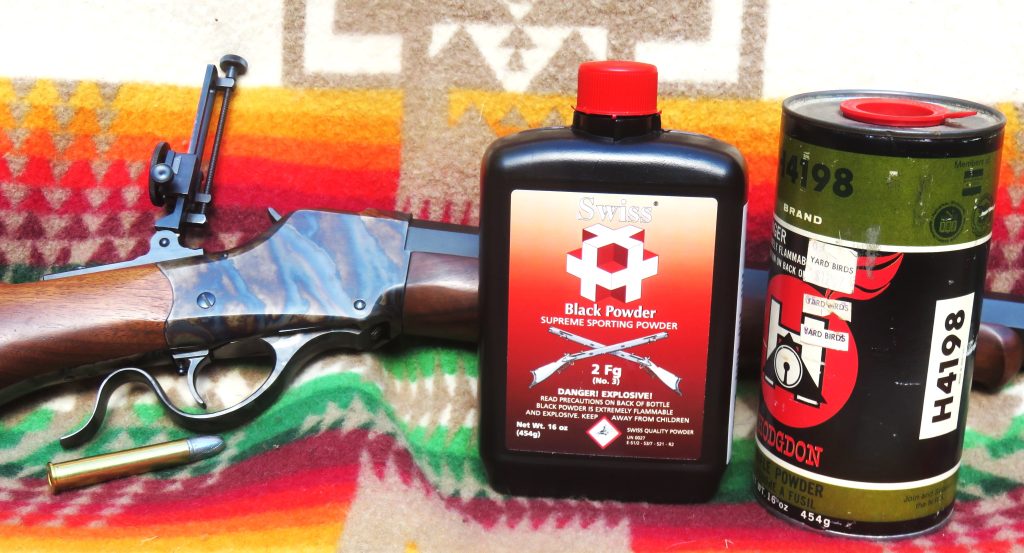
By Mike Nesbitt | Contributing Editor
In a couple of previous stories, I’ve mentioned my .38-55 Highwall by C. Sharps Arms, the rifle I’ve referred to as my ‘old man’s gun.’
That reference is in recognition of how easy it is to shoot; easy on the old shooter that is. Very mild recoil and both the Highwall and the .38-55 cartridge have famous reputations for excellent accuracy. While I’ve certainly enjoyed the shooting which has been done with my Highwall, the rifle that Pat Dulin helped me nickname “Ol’ Corky,” I have not, as yet, found the best black powder loading for it, one that pleases me.
This story is being started, perhaps, just a little too early because I’m writing about a loading that I haven’t tried. We might say I’m banking, somewhat heavily, on things that have led up to this loading which I will try before this story is concluded. So, at this time, you and I are both wondering how this tale will end. But I do have positive thoughts and expectancies.
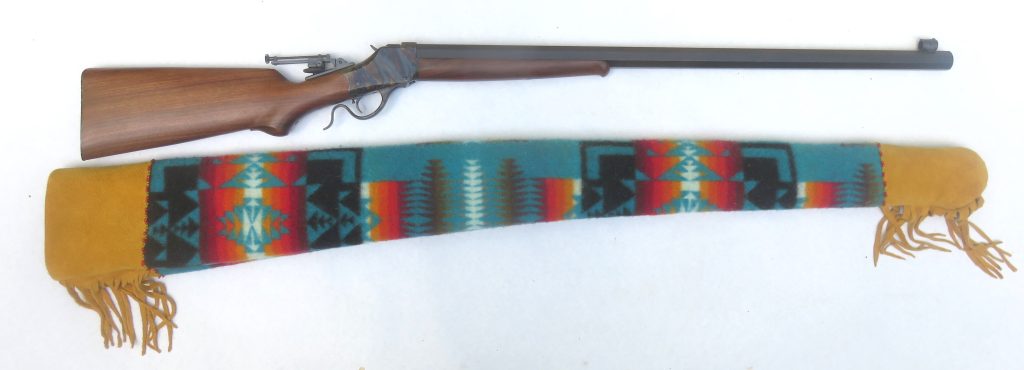
A little background about the rifle is probably in order. I got it just over a year ago from C. Sharps Arms, a standard Model 1885 Highwall, with a 30-inch barrel in .38-55 caliber. That barrel is a #5 weight, the heaviest C. Sharps Arms regularly puts on a Highwall, copying the heaviest barrel Winchester cataloged for that gun. This rifle was ordered and purchased with shooting cast bullets and black powder loads in mind and it is somewhat surprising that finding a good load seems to be hard to accomplish. Maybe it’s just me and my expectancies.
Then, while doing some shopping on vendors’ row at the Matthew Quigley Buffalo Rifle Match last June, I stumbled upon some .060” veggie wads for .38 caliber rifles (by Prairie Star Shooting Supplies, out of Henry, Nebraska, 307-575-0542) and bought them. Some home cut cardboard wads had been tried before but these new veggie wads might offer more help with their added thickness, perhaps offering the base of the bullets a bit more protection. For the price of the wads, it was certainly worth a try.
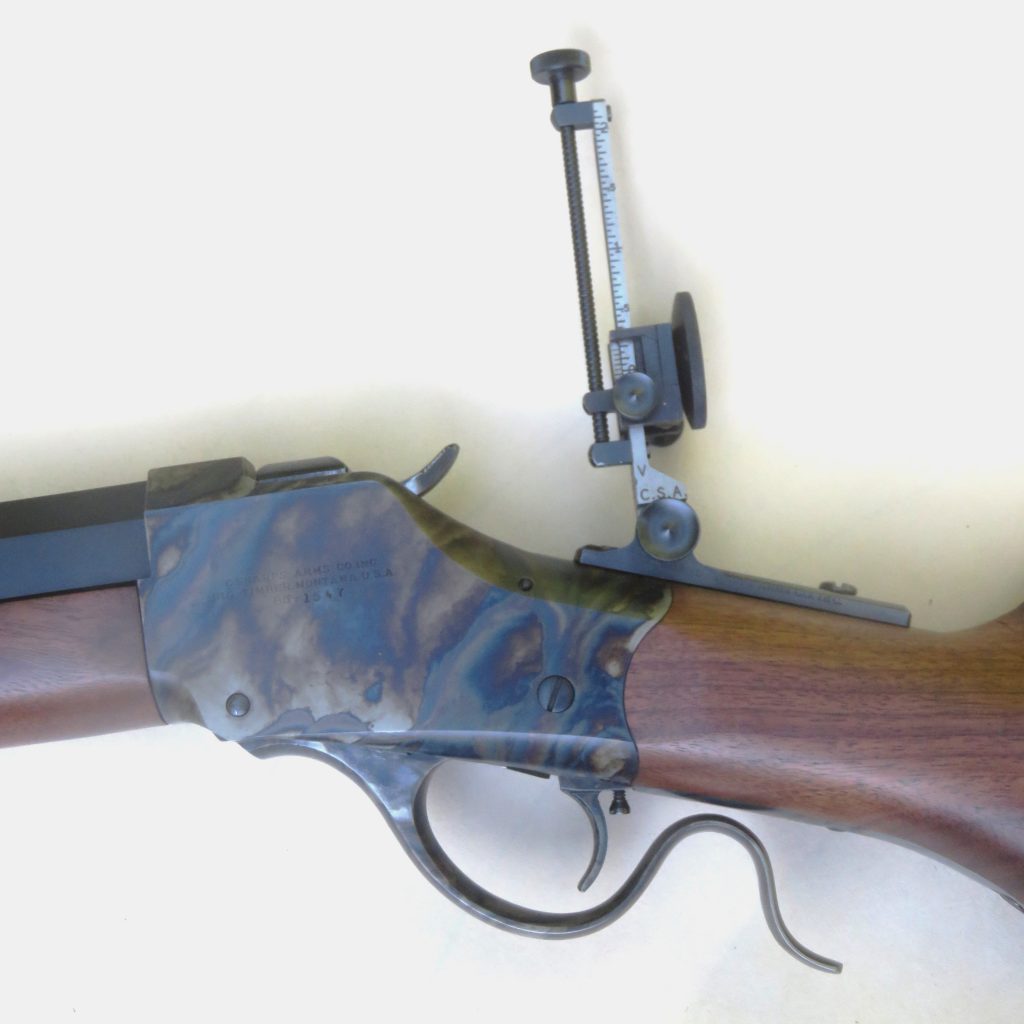
After returning home from that Quigley Match, some bullets from an old Lyman mold, #375167 (discontinued) which were intended for the .38-72 Winchester, weighing 275 grains, were loaded over 45 grains of Swiss 2Fg powder and given a try. The target was posted at just 50 yards, simply to find out where the bullets were going, and all ten rounds were fired. That target held the best group I’ve gotten with this rifle while using cast bullets and black powder loads with the exception of a similar group which was fired at a closer distance while using the short-range loads. The group just shot with the .38-72 bullets breathed some new hope into my trials with this rifle.
And the muzzle velocity with those bullets and the 45 grains of Swiss 2Fg powder was 1,330 feet per second, fitting nicely in the “ball park” of where I’d like it to be.
The experience with using those .060” wads under the .38-72 bullets was passed on to Pat Dulin, at C. Sharps Arms, to confer with him and to seek his opinion on what to do next. It was Pat’s suggestion to try a duplex load, a loading using black powder along with a small percentage of smokeless powder.
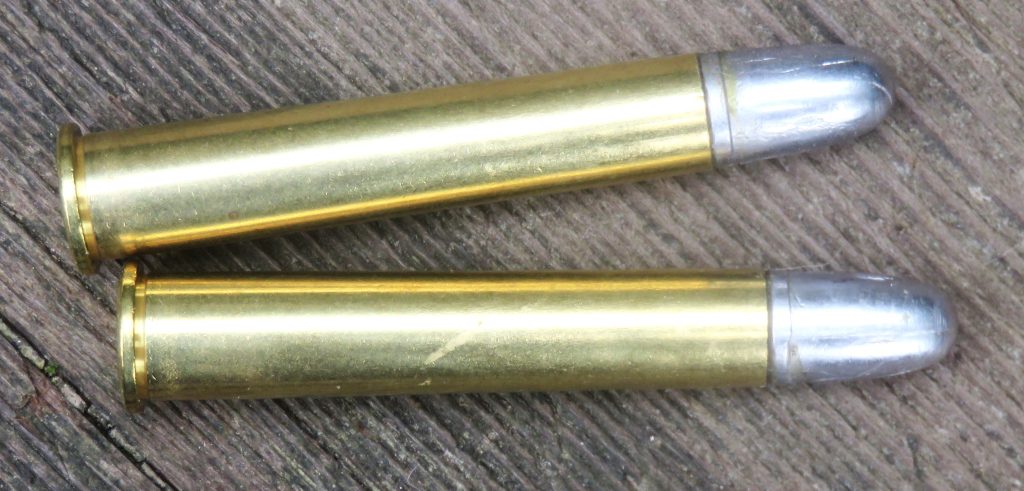
Duplex loads are something I’ve had some good experiences with but I have not used them lately. In fact, about 45 years ago it seemed like most all black powder cartridge shooters used duplex loads, that was the normal way to go. Then, following some noticeable improvements to black powders, as seen in the GOEX Cartridge powder as well as the Swiss powders, and then GOEX’s Olde Eynsford, the use of duplex loadings seemed to fade away. With the cleaner burning Swiss and Olde Eynsford, the advantages of using duplex loads were certainly not as obvious as they had been with the older DuPont and GOEX Fg series powders.
The main reasons for using duplex loads were to have the smokeless powder help the black powder burn more completely and consistently. Gaining an advantage in velocity was not a real objective, although that did usually take place. The burning of the smokeless powder needed to be continuous as the bullet traveled and exited from the barrel’s muzzle and that continued burning greatly reduced the black powder fouling left in the rifle’s bore.
In those years four decades ago, one very common “recipe” for a duplex load was to simply charge a primed case for a black powder rifle cartridge with 5 grains of Unique before adding the black powder. With certain cartridges, such as the .45-70 and smaller, that would work well provided it was fired in a rifle with a fairly short barrel, perhaps like a Model 1886 Winchester carbine with a 22-inch barrel.
The reason that was not more generally better is because Unique is a rather fast burning powder. I recall one shooter back in the 1980s who had “horse power fever” and had to have the biggest because, to him, that was also the best. He selected a .45-120-3¼-inch Sharps, perhaps with a 34-inch barrel. Following common habits, he loaded duplex ammo for this long-range cannon by putting just 5 grains of Unique in the bottom of the case and then filling the rest of the case, perhaps with as much as 115 grains of black powder. Then he commented, or complained, that his loading burned very cleanly except for the last four or five inches of the bore which was very dirty. That section of dirty bore near the muzzle simply showed where the smokeless powder had burned out, leaving the black powder to finish the job. A slower burning smokeless powder might have kept his bore cleaner from breech to muzzle.
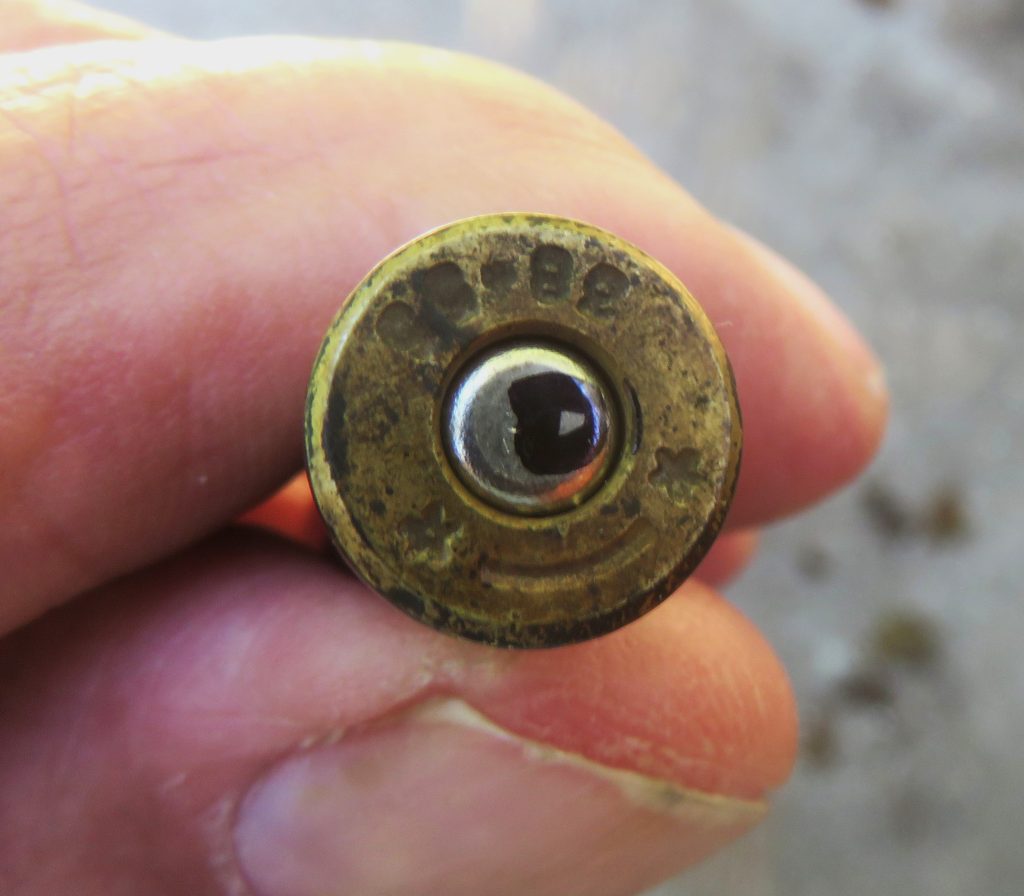
Selection of a smokeless powder for use in duplex loads can certainly make a difference. Back during those times, I ran some informal tests with my own .45-70 and .50-90 caliber rifles. As you might guess, those two calibers have different volumes inside their brass cases and they each performed best with a different smokeless powder. I also ran some tests on where to put the smokeless powder inside the load, whether it should be at the bottom of the powder column next to the primer, in the middle of the powder, or at the top of the powder column just under the bullet. Having the smokeless powder in those three locations within the load made some real differences.
The results of those shooting tests were very easy to see and a chronograph was not needed. Always put the smokeless powder down next to the primer for best ignition and burning. With the smokeless powder in the middle of the powder column it seemed to have only half of the desired effect. And with the smokeless powder placed just under the bullets, at the top of the powder column, it was like there was no smokeless powder in the load at all, apparently it was simply blown out the muzzle before it could be burned. The question about where to put the smokeless powder in a duplex load was never asked again.
Those comments have all been said in general because when you start talking about a single caliber or cartridge, things can be mentioned much more specifically. So, now we’ll get back to talking about the .38-55 and the duplex load which was tried for that cartridge in the Highwall. First, those bullets intended for the .38-72 were used again. When I mentioned using Unique powder to Pat Dulin, he immediately suggested using a slower powder, which I had to agree with. So, the powder I selected was some Hodgdon H4198 (which I’ve had for years) and the amount used was just 4 ½ grains.
Another powder I had considered using was some #3031 but selected the H4198 because it is just slightly faster burning.
The way the 4 ½ grains of powder was selected is easy, that is just 10% of the total powder charge, more is simply not needed. With those 4 ½-grains of powder, individually weighed and poured into the primed cases, the “main charge” of 40 ½ grains of the Swiss 2Fg was then added to the load, and then the whole charge was compressed under the veggie wad deeply enough to fit the bullet into the case.
Ignition, by the way, was still provided by large pistol primers. And, with the loads completed by seating the bullets with all lube grooves within the cases, the loads were marked with a “D” (for “duplex”) marked on those primers with a Sharpie pen.
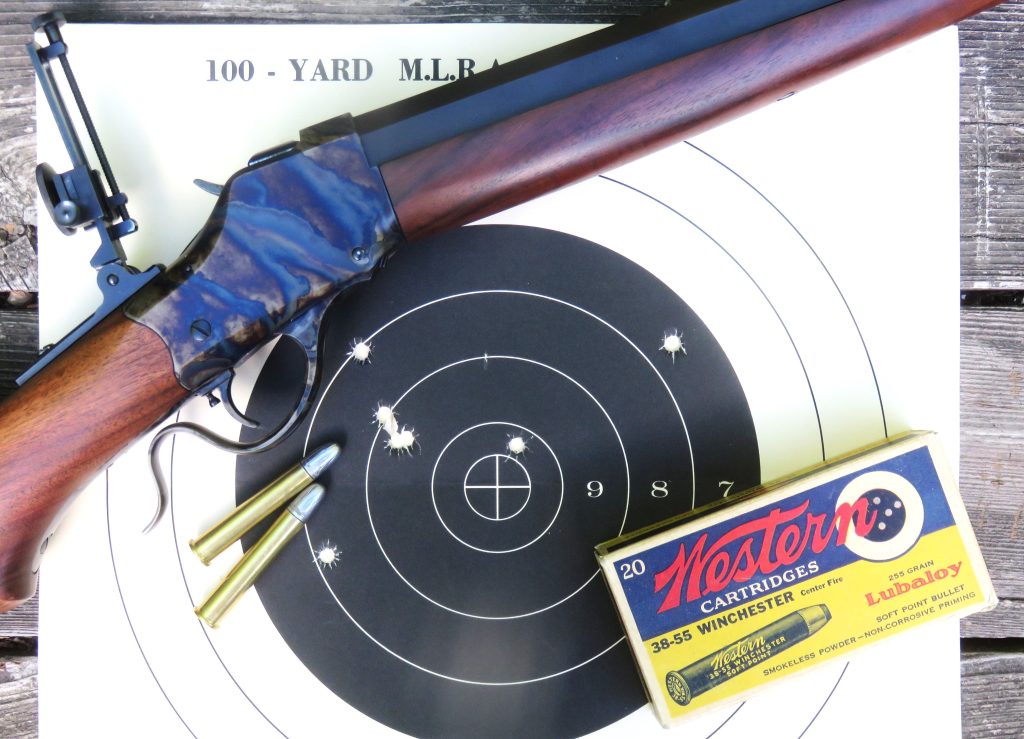
With fifteen of those loads completed, it was time to go shooting. A single target was posted at 100 yards and I took my place at the bench, behind the rifle’s butt plate. The shooting was simply great, although the group size was not as good as I had hoped. Compared to some of the groups previously shot with this rifle, my shooting with the duplex loads showed an improvement. Maybe I should simply do more, which I will. My hopes for a really big improvement did not take place but hints of that happening later on do exist.
Also, like I said earlier, using duplex loadings were not generally done to raise velocity although bullet speeds did often rise. That can certainly be said about this loading because the average velocity for these 275-grain bullets out of the .38-55 was 1430 fps, showing an increase of 100 feet per second. And the velocities of the ten shots fired were very close, showing some good consistency in the loading. The 10% duplex load with the H4198 will be tried some more, perhaps with a different bullet while searching for the best ‘ingredients.’
Editor’s Note: Reloaders should always use caution when working with duplex loads. Suggestions here are those of the author, not TheGunMag.com


